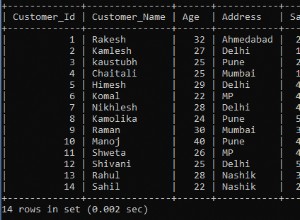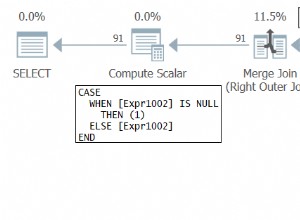Una clave externa puede estar basada en varias columnas, por lo que conkey y confkey de pg_constraint son matrices. Debe anular las matrices para obtener una lista de nombres o tipos de columnas. Puede utilizar estas funciones:
create or replace function get_col_names(rel regclass, cols int2[])
returns text language sql as $$
select string_agg(attname, ', ' order by ordinality)
from pg_attribute,
unnest(cols) with ordinality
where attrelid = rel
and attnum = unnest
$$;
create or replace function get_col_types(rel regclass, cols int2[])
returns text language sql as $$
select string_agg(typname, ', ' order by ordinality)
from pg_attribute a
join pg_type t on t.oid = atttypid,
unnest(cols) with ordinality
where attrelid = rel
and attnum = unnest
$$;
Las funciones pueden ser muy útiles cuando se consultan restricciones e índices. Su consulta es agradable y simple con ellos:
select
conrelid::regclass,
get_col_names(conrelid, conkey) col_names,
get_col_types(conrelid, conkey) col_types,
conname
from pg_constraint
where contype ='f';
conrelid | col_names | col_types | conname
----------+-----------+-----------+------------------------
products | image_id | int4 | products_image_id_fkey
(1 row)




